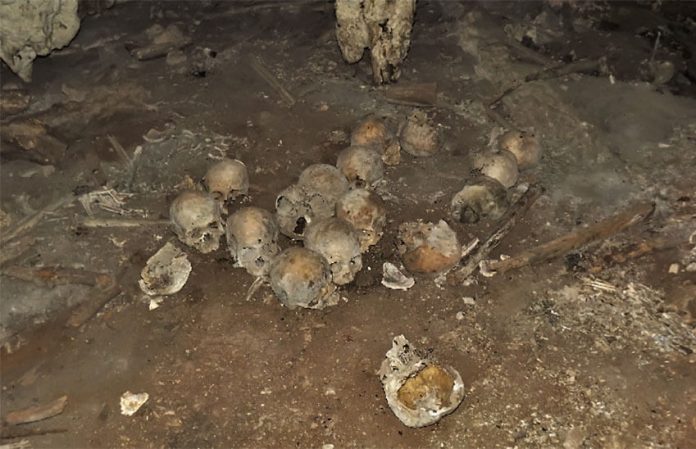Some 150 skulls found in Chiapas 10 years ago are not the craniums of recent victims of violent crime as investigators originally thought, but belonged to Mayan people who were likely killed in a sacrificial ritual between A.D. 900 and 1200, the National Institute of Anthropology and History (INAH) announced.
Police found the skulls – the majority of which belonged to females – in 2012 in a cave in the southern border municipality of Frontera Comalapa.
INAH said in a statement in late April that investigators believed they were looking at a crime scene and took the skulls to the state capital Tuxtla Gutiérrez for analysis.
“It was thought it was a narco-grave,” INAH researcher Javier Montes de Paz said earlier this week.
The hypothesis was credible given that violence is not uncommon on Mexico’s border with Guatemala, over which hundreds of thousands of undocumented migrants travel every year, and the skulls didn’t have holes through each side, as is usually the case with pre-Hispanic craniums. Mayan skulls are also more commonly found in ceremonial plazas than caves.
However, testing and analysis indicated that the skulls in fact came from sacrificial victims killed about 1,000 years ago.
INAH experts said the victims whose skulls were found in the Chiapas cave were probably decapitated in a pre-Hispanic ritual. Their craniums – from which all the teeth were removed – were likely put on a skull rack called a tzompantli, they said.
Instead of discovering a recent crime scene, police found “a thousand-year-old Mayan culture archaeological treasure,” Montes de Paz said.
Most skulls on tzompantlis are strung up on wooden poles using the holes bashed in their sides. However, the INAH experts said that those found in Frontera Comalapa may have been placed atop the poles instead.
Montes de Paz noted that 124 toothless skulls were found in the 1980s in a cave in the Chiapas municipality of La Trinitaria, which is also on the border with Guatemala. Five other skulls that were also probably part of a tzompantli were found in 1993 in a cave in Ocozocoautla, a municipality in Chiapas’ northwest.
